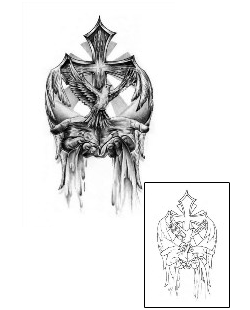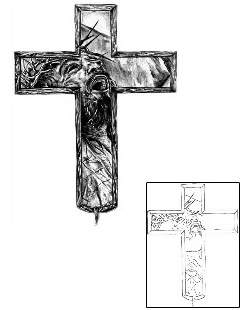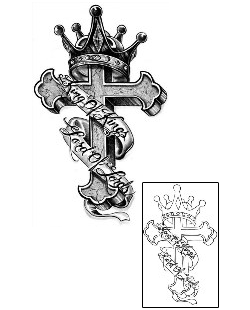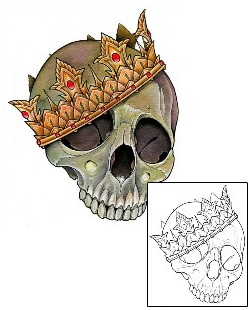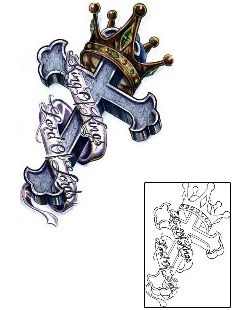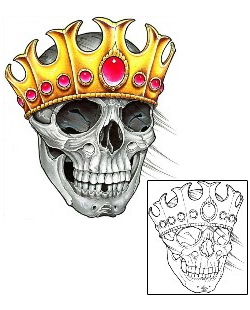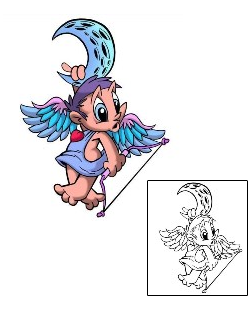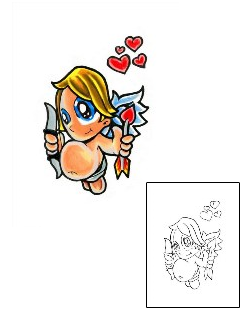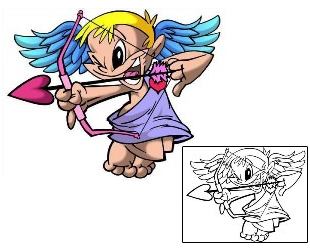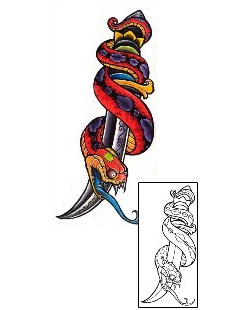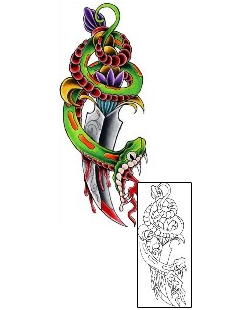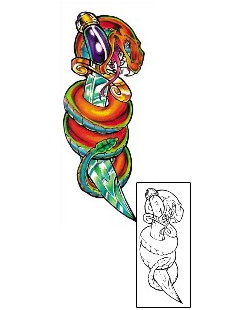In the world of religious symbols, crosses have been showing up in archaeological discoveries that date back to years that are far more ancient than the birth of Christ and Christianity. The cross has been revered and modified – reinvented over and over again – by a great deal of the world’s religions. For tattoo seekers who aim to use the art to bear witness of their spiritual lives, whether Judeo-Christian or not, it may be wise to learn about the wide selection of cross tattoo designs that abound in tattoo parlors across the country and world.
Christian Inspired Cross Designs
-
The Latin Cross. This is the simple cross most popular today, with a long vertical line with a smaller horizontal line intersecting it about 1/3 of the way down. For a Latin cross tattoo design, you might consider one that has a wooden appearance. Other variations include adding shamrocks if you’re Irish, flames if you’re Pentecostal or Charismatic; wing and praying hands also go well with the Latin cross, especially in memorial tattoos.
-
The Cross of Triumph. Similar to the Latin cross, the Cross of Triumph adds a large circle to the base with the outline of an upside-down T inside. This cross is a symbol that testifies to the universal triumph of the Gospel throughout the world.
-
The 3-Step Cross (or the “Graded Cross”). This cross takes the Latin cross and adds 3 steps at the bottom. From the top down, these steps signify faith, hope and then love.
-
The Crucifix. The Crucifix takes that traditional Latin cross and proclaims the image of Christ’s crucifixion and death. Most commonly, the cross of the crucifix is wooden. This is a popular symbol in the Catholic faith.
-
The Russian Orthodox Cross. This icon of the Russian Orthodox Church is similar to the Latin cross, but it simply has added 2 more lines. One is a smaller horizontal line above the original horizontal, plus an additional line running diagonally (sloping down from the left to the right) placed below the original horizontal line.
-
The Tau Cross. This was the founder of the modern cross, and was as popular in the ancient history of Christianity as the Latin cross is today. But, instead of making a cross, the design of the cross is a capital “T”. It’s name, Tau, is the Greek word for the letter t.
-
The Crusader’s Cross. To visualize the Crusader’s Cross, imagine four capital T’s. Then, place those four T’s together, each facing one of the four directions (N, S, E or W), with the base of each T meeting in the middle. Worn by many Crusader knights, this cross was actually composed of a total of five different crosses, each one signifying one of the wounds Christ suffering during the crucifixion.
-
The Maltese Cross. The Maltese cross is created by combining four special triangles (which are more like a double lined forked V) joined at their apexes. Also known as an 8-pointed star, this design also dates back to the time of the Crusades. It was worn by the order of the Hospitallers, who later moved their headquarters to Malta.
-
The Celtic Cross. Also known as the Cross of Iona, this design was popular among early Christians in Brittania, and spread to the rest of Europe widely in the 6th century A.D. In it’s simplest form, the Celtic cross is like a Latin cross with a small circle surrounding the arms’ intersection. This design is incredibly popular in Celtic tattoos and tribal designed armbands. Some tattoo artists and flash galleries have some very impressive and intricate Celtic cross designs available.
-
The Anchor Cross. Popular among sailors and maritime professionals, this cross design actually originated in Egypt. However, early Christians adopted this sign as their own, and used it often enough that it is common to the Catacombs.
-
St. Andrew’s Cross. The Cross of Saint Andrew is shaped like an “X” with arms of equal length intersecting at their centers. St. Andrew, like the Apostle Peter, didn’t deem himself worthy to be buried on a cross identical to Christ’s.
-
The Resurrection Cross. This cross is based on the structure of the Latin cross. However, it is of wooden construction, and has a purple robe draped over the horizontal arm, a crown of thorns perched across the top, and a wooden rectangle bearing the inscription “I.N.R.I” (which translates loosely to “Jesus Christ of Nazareth, King of the Jews”). This particular cross design has an Easter celebratory tone to it, and could easily be paired with a separate tattoo of a cave tomb with the stone rolled away.
Popular Non-Christian Crosses
-
The Greek Cross. Also known as the equilateral cross, this design dates back quite a long time ago. In the Chaldeao/Assyrian it symbolized the sky and the god Anu. This cross has also been associated with sun-worship throughout history.
-
The Native- and Mesoamerican Cross. The cross showed up quite often in the history of tribes across North and South America. Generally used to represent the four winds, or the tree of life, it also had religious significance with many of their gods.
-
The Chinese Cross. In China, the cross symbol has been most closely associated with the Chinese ideogram for the word “earth”. As a matter of fact, in Chinese legend, there is a saying that goes: “God fashioned the earth in the form of a cross”.
-
The Ankh (or “The Handled Cross”) Popular in ancient Egypt, the Ankh held strong cultural significance, and is often interpreted as the key of life. In Egyptian tomb paintings, the gods used the ankh to awaken the souls of the dead to a new life.
-
The Tau Cross. This cross falls into both categories, simply because it was used both by Christians and pagans in their religious symbolism. The Tau or T shaped cross was thought to represent the hammer of Thor. In ancient Mayan inscriptions, there are pictures of people in the act of worship and adoration of a T shaped cross with a bird perched upon the horizontal arm. This was also the cross and emblem of the god Tammuz.
-
The Gammate Cross. Also known as the swastika, this symbol is hardly restricted to its history in WWII and the Nazi party. Along with the equilateral cross, this symbol can be traced back to very distant times. It appears in nearly every single culture and religion throughout history, from the Gauls to the Hindus of India. It can also be found throughout the continent of Africa, and in Mesoamerican history.
-
Gothic Crosses. Available in many different variations, the Gothic cross is usually dark Germanic in style and is commonly formed of wrought iron. Popular in the gothic and vampire cultures, these designs are reminiscent of Anne Rice’s New Orleans tales.
-
The Aztec Cross. Perhaps more similar to a four-petal flower, the Aztec cross may have been associated with astronomy and the appearance of eclipses. It was also shown as a cross with a square center with four trapezoids facing in the four directions. It’s similar to a simplified version of the Maltese cross.
Whether you’re looking for a Christian or non-Christian tattoo design, a cross might just be what the doctor ordered. As armbands, anklets, lower back or hip tattoos, crosses can’t go wrong. If you choose a cross design, you can rest assured that you’ve chosen a timeless, historical symbol to symbolize your individuality!


